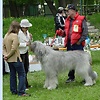Dastgeer
Shahi, 31 y.o.Looking for
Friends
Language practice
Meeting in person
Postal pen pals
Flirting and romance
Education
Bachelor's degree
Occupation
Heavy machinery operator
Relationship status
Single
Messaging
Joined
12 years ago,
profile updated
3 years ago.
Displaying posts 1
to 10
of 19.
love you my friends
happy valentine day to yoo all

Tourist season of GOJAL:
Tourist season starts in April and ends around mid October. This in largely because of could winters in Hunza and the fact that most visitors are en route to China, via the Khunjerab Pass, which closes in winter.
For the intrepid traveller, however, the area offers many rewards to the winter visitor. As the winter snows cover the mountain slopes, the scattered villages are surrounded in vibrant while. The mountain monarchs, the Himalayan ibex, decend in search of clumps of grass on which to feed, and every the elusive snow leopard becomes less wary at this time of year in its desperate search for prey.
Attacks on livestock are not uncommon nowadays, due to population reduction in its major prey species, the ibex. Unfortunately, these starvation induced attacks do nothing to help this beautiful but scarce creature and it is often persecuted as a result.
Tourist season starts in April and ends around mid October. This in largely because of could winters in Hunza and the fact that most visitors are en route to China, via the Khunjerab Pass, which closes in winter.
For the intrepid traveller, however, the area offers many rewards to the winter visitor. As the winter snows cover the mountain slopes, the scattered villages are surrounded in vibrant while. The mountain monarchs, the Himalayan ibex, decend in search of clumps of grass on which to feed, and every the elusive snow leopard becomes less wary at this time of year in its desperate search for prey.
Attacks on livestock are not uncommon nowadays, due to population reduction in its major prey species, the ibex. Unfortunately, these starvation induced attacks do nothing to help this beautiful but scarce creature and it is often persecuted as a result.
Culture of GHULKIN
The culture of the wakhi people are same whether they belong from Afgan, Tajikistan, China, Pakistan or othres.
The people of Ghulkin village strongly belive their culture.They belive the culture in the past and doing the same did in the past.They all get toghter whether its marrige,religious etc...
People
Culture
Trek routes
Tourist Season
Photo Gallery
Navroze on the 21st of March, is both a religious and a cultural festival. There are dances and festive gatherings to welcome spring. Prayers are offered for a good harvest season. Navroze is also the beginning of the Ismaili new year. People gather at the village Jamaatkhana to celebrate and pray for a happy new year. The celebrations take place in theoutdoors.
Wingus-tue (Marriage of the Sparrow) falls in March. Villagers gather together to eat and pray. Kitdith is an additional event to Wingus-tui. Dried meat left over from the winter season is eaten on this occasion and people pray for a productive planting season.
Cheneer is a local event which marks the beginning of the harvest season, extending from July-August.
Taghum is a two day event, taking place in the ploughing season during March.
The culture of the wakhi people are same whether they belong from Afgan, Tajikistan, China, Pakistan or othres.
The people of Ghulkin village strongly belive their culture.They belive the culture in the past and doing the same did in the past.They all get toghter whether its marrige,religious etc...
People
Culture
Trek routes
Tourist Season
Photo Gallery
Navroze on the 21st of March, is both a religious and a cultural festival. There are dances and festive gatherings to welcome spring. Prayers are offered for a good harvest season. Navroze is also the beginning of the Ismaili new year. People gather at the village Jamaatkhana to celebrate and pray for a happy new year. The celebrations take place in theoutdoors.
Wingus-tue (Marriage of the Sparrow) falls in March. Villagers gather together to eat and pray. Kitdith is an additional event to Wingus-tui. Dried meat left over from the winter season is eaten on this occasion and people pray for a productive planting season.
Cheneer is a local event which marks the beginning of the harvest season, extending from July-August.
Taghum is a two day event, taking place in the ploughing season during March.
Welcome To Ghulkin Ghulkin Village is located in Gojal, upper Hunza. It is reached by following the Karakoram Highway (KKH) 140km north of Gilgit. This trip takes 3-4 hours by van. From a turn-off just beyond Gulmit, a winding jeep track leads upwards for 3 km, until the ground flattens out and the first houses of the village come into view.
Ghulkin occupies the site of an old glacier fed lake, which has been silted up by continuous sedimentation. Many of the 140 traditional dwellings that constitute Ghulkin village are arranged in a circular form, facing the one-time shores of the lake, creating a wonderfully communal atmosphere. The central area now supports several dwellings and fields, including a strip of land often used as a cricket pitch.
There is no accurate historical record of the origin of the village, though it is estimated to be around 600 years old. According to local folklore, there were settlements here while the lake was still in existence, this area being used as pastureland in summer. The name is derived from two words of the local Wakhi dialect, 'Ghulk', meaning 'well' and 'kin', meaning 'whose'.
Being an area of low rainfall, the most vital requirement is water for irrigation, livestock, drinking and domestic use. Khawaja Ahmed, and Ismaili Muslim who came here with the Mir of Hunza, asked him for land. After the Mir agreed, Khawaja Ahmed mobilised the people of the area to construct a water-channel to irrigate the land. This made cultivation possible and the Ismaili settlement flourished. Now small scale health and educational institutions, electricity and water-sully facilities are available in the village. Through the involvement of capacity-building NGOs, there is also a handicraft production centre and opportunities for other vocational training.
The Jammatkhana, the central religious institution for all Ismaili Muslims, holds a strong position in the community. Apart from its religious functions, it provides
Ghulkin occupies the site of an old glacier fed lake, which has been silted up by continuous sedimentation. Many of the 140 traditional dwellings that constitute Ghulkin village are arranged in a circular form, facing the one-time shores of the lake, creating a wonderfully communal atmosphere. The central area now supports several dwellings and fields, including a strip of land often used as a cricket pitch.
There is no accurate historical record of the origin of the village, though it is estimated to be around 600 years old. According to local folklore, there were settlements here while the lake was still in existence, this area being used as pastureland in summer. The name is derived from two words of the local Wakhi dialect, 'Ghulk', meaning 'well' and 'kin', meaning 'whose'.
Being an area of low rainfall, the most vital requirement is water for irrigation, livestock, drinking and domestic use. Khawaja Ahmed, and Ismaili Muslim who came here with the Mir of Hunza, asked him for land. After the Mir agreed, Khawaja Ahmed mobilised the people of the area to construct a water-channel to irrigate the land. This made cultivation possible and the Ismaili settlement flourished. Now small scale health and educational institutions, electricity and water-sully facilities are available in the village. Through the involvement of capacity-building NGOs, there is also a handicraft production centre and opportunities for other vocational training.
The Jammatkhana, the central religious institution for all Ismaili Muslims, holds a strong position in the community. Apart from its religious functions, it provides
thank you ..
Beautiuful photos !!!
i see you're quite the traveller :D
Khunjrab National Park
Located at a height of over 4000 metres and along the famous Karakoram Highway (KKH) and near the Kunjrab Pass, Khunjrab National Park is Pakistan's third largest National Park. The park is adjacent to Taxkorgan Natural Reserve in China. This park was established in 1975 on the recommendation of renowned wildlife biologist Dr. George Schaller, since the population of Marco Polo Sheep was declining at an alarming rate. In fact the construction of the Karakoram Highway provided an easy access to the hunters to the wildlife in the area. The Marco Polo Sheep’s trophy sells for as much as $60,000 and this rare animal was hunted to near extinction. Also, the building of the highway has disturbed the wildlife in the area and many animals have migrated across the border to China and Afghanistan.
Khunjerab National Park consists of three different valleys: Khunjerab (through which the Karakoram Highway passes), Ghujerab and the remote Shimshal valley. As local communities had traditionally used the entire area for grazing domestic livestock in summer, Dr. Schaller recommended a 12 kilometre portion of the park to be closed for grazing in order to provide protection to Marco Polo sheep against disturbance and food competition. This portion of the park was declared the core zone of the park. However, imposing a ban on grazing of livestock without compensation or concessions to grazing for the local communities created serious conflicts between the park management and the local people.
Now with the emergence of this park, the number of this species is very slowly increasing. Marco Polo Sheep is recognized by the very long outward curving horns, developed in the mature males. An aged ram is is very impressive and majestic, mainly because of massive spiraling horns which can span a man's outstretched arms and almost twice the height and size of most other wild or domestic sheep. The Marco Polo sheep is an inhabitant of very high mountains sub
Located at a height of over 4000 metres and along the famous Karakoram Highway (KKH) and near the Kunjrab Pass, Khunjrab National Park is Pakistan's third largest National Park. The park is adjacent to Taxkorgan Natural Reserve in China. This park was established in 1975 on the recommendation of renowned wildlife biologist Dr. George Schaller, since the population of Marco Polo Sheep was declining at an alarming rate. In fact the construction of the Karakoram Highway provided an easy access to the hunters to the wildlife in the area. The Marco Polo Sheep’s trophy sells for as much as $60,000 and this rare animal was hunted to near extinction. Also, the building of the highway has disturbed the wildlife in the area and many animals have migrated across the border to China and Afghanistan.
Khunjerab National Park consists of three different valleys: Khunjerab (through which the Karakoram Highway passes), Ghujerab and the remote Shimshal valley. As local communities had traditionally used the entire area for grazing domestic livestock in summer, Dr. Schaller recommended a 12 kilometre portion of the park to be closed for grazing in order to provide protection to Marco Polo sheep against disturbance and food competition. This portion of the park was declared the core zone of the park. However, imposing a ban on grazing of livestock without compensation or concessions to grazing for the local communities created serious conflicts between the park management and the local people.
Now with the emergence of this park, the number of this species is very slowly increasing. Marco Polo Sheep is recognized by the very long outward curving horns, developed in the mature males. An aged ram is is very impressive and majestic, mainly because of massive spiraling horns which can span a man's outstretched arms and almost twice the height and size of most other wild or domestic sheep. The Marco Polo sheep is an inhabitant of very high mountains sub
Please Sign In
or Join for Free
to view the rest of this profile.



















